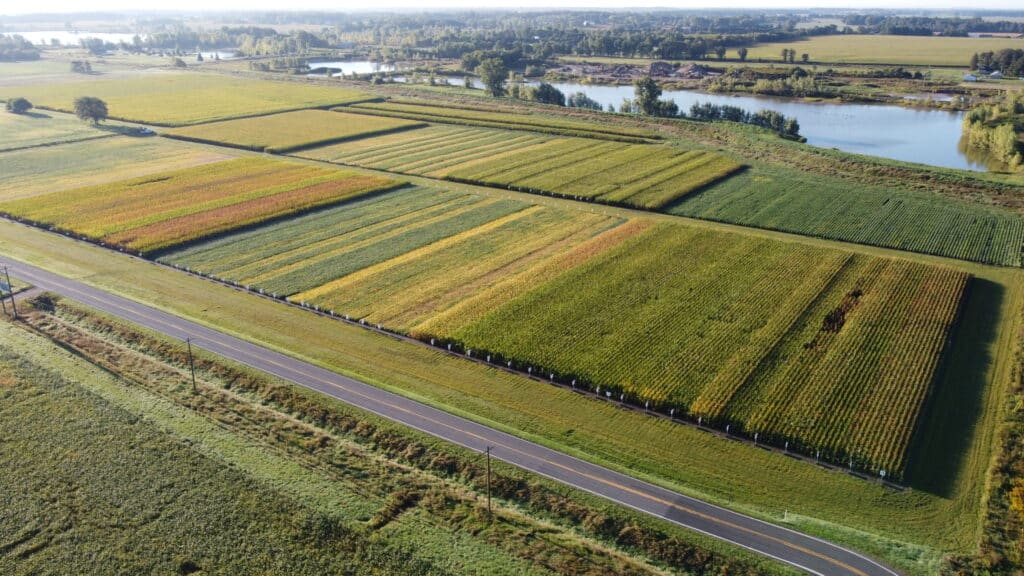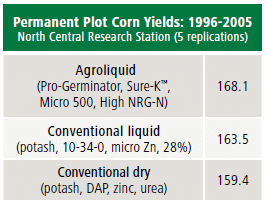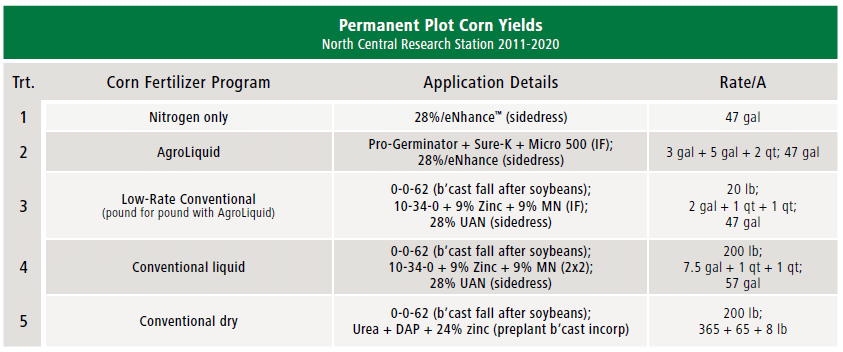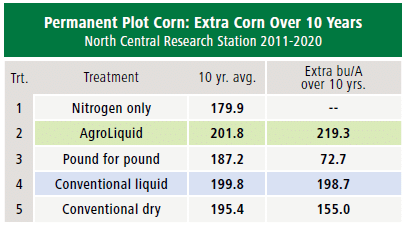AgroLiquid has looked extensively at permanent plot trials at the North Central Research Station, where the same fertilizer programs are used on the same plots over a series of seasons. With this methodology, researchers can determine year over year changes. The question: Will AgroLiquid perform over time? The answer: Yes, and we’ve got the research to prove it.
Finding out the exact science of what works through trials helps our researchers, agronomists, and sales team make the best decisions for you and your crops. Other advantages of permanent plot research include:
- Long-term impact assessment
One of the strengths of permanent plot research is the ability to assess the long-term impacts. AgroLiquid research provides a reliable and consistent nutrient supply over the duration of these studies, so researchers can not only observe immediate effects, but also monitor nutrient management and results for a series of years.
- Soil health monitoring
Soil health is always a focus, and the precise application of liquid fertilizers helps maintain a balanced nutrient profile in the soil to help with a healthy microbial makeup. Over time, this contributes to improved soil structure, nutrient cycling, and overall soil health in permanent plots.
- Adaptability to crops and practices
In permanent plot research, where the goal is to understand the impact of changes on different crops, this adaptability matters. Researchers can customize nutrient management strategies based on the needs of each crop, allowing for a better understanding of agronomic practices.
- Data-driven use
The precision application of fertilizer minimizes runoff and leaching, which helps with the responsible farming practices that permanent plot research supports. AgroLiquid also helps with data-driven decision making. The consistent and precise application of fertilizers generates reliable data on the response of crops to specific nutrient use. This helps everyone involved make better decisions about resource use, to help with the best productivity.
What results did the data give?
The first plot trials ran from 1996 to 2005 on corn, comparing AgroLiquid Pro-Germinator, Sure-K, Micro 500, and High NRG-N use with conventional liquid, and conventional dry. The results: The AgroLiquid program had a higher average yield despite lower pounds per acre of actual nutrients applied, and did not have extra application trips of dry fertilizer.
Researchers performed tests over ten years of corn yields and ten years of soybean yields, all with four replications of treatments. Here are the results for the permanent plot corn yields 2011-2020.
What do you notice?
Yields were much higher than the 170 bu/A yield goal, even for the nitrogen only. The highest average yield was with AgroLiquid. The AgroLiquid yield was statistically higher than the conventional dry treatment, and the AgroLiquid yield was significantly higher than that of the “pound for pound” rate of conventional fertilizers.
That’s not all…this table shows the extra corn produced over 10 years compared to using only nitrogen. By using Pro-Germinator, Sure-K and Micro 500, an extra 219.3 bu/A was produced, which is like producing an entire extra year of corn.
With permanent plot research, AgroLiquid can help understand the effects with continuing monitoring and analysis, helping us refine our products and practices over time. Our goal is to give growers the best, evidence-based solutions for increased yields, better soil health, and a more positive agricultural future.
Our trials provide evidence that AgroLiquid not only performs consistently over time, but also beat conventional fertilizers in both yield and efficiency. The long-term impact assessments, soil health monitoring, adaptability to crops, and data-driven precision application highlight the advantages of this approach.
For all of our research, visit our site.





